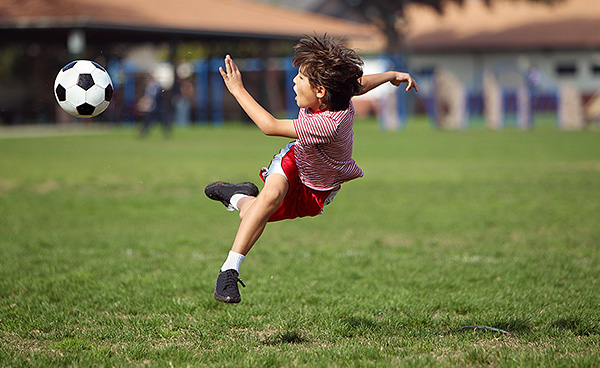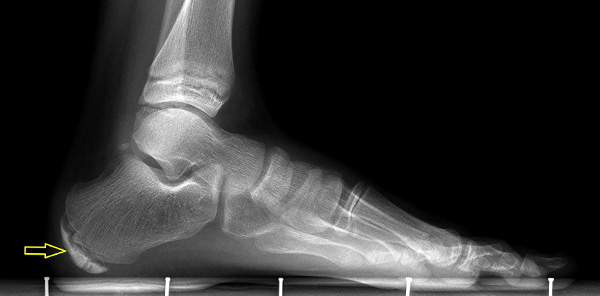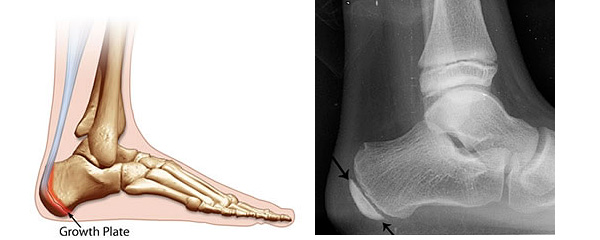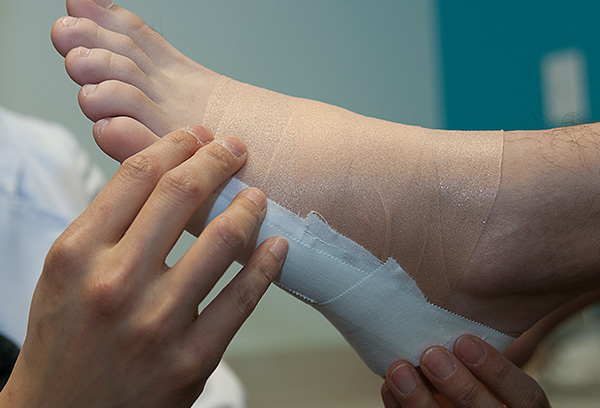Heel pain can also occur in children, most commonly between age 8 and 13, as they become increasingly active in sports activity in and out of school. Physical activity, particularly jumping and running, inflames the growth centers of the heels — a condition known as Calcaneal Apophysitis or Sever’s Disease. The more active the child, the more likely the condition will occur. The heel bone (calcaneus) is not fully developed until at least 13 years of age. Until then, new bone is forming at the growth plate (physis), a weak area located at the back of the heel. When there is too much repetitive stress on the growth plate, inflammation can develop. This is the most common cause of heel pain in children, and can occur in one or both feet.

Heel pain in children differs from the most common type of heel pain experienced by adults (plantar fasciitis). While heel pain in adults usually subsides after a period of walking, calcaneal apophysitis in kids generally doesn’t improve in this manner. In fact, any physical activity makes the pain worse.
Causes
Overuse and stress on the heel bone through participation in sports is a major cause of calcaneal apophysitis. The heel’s growth plate is sensitive to repeated running and pounding on hard surfaces, resulting in muscle strain and inflamed tissue. For this reason, children and adolescents involved in soccer, track, dance, or basketball are especially vulnerable.
Other potential causes of calcaneal apophysitis include obesity, a tight Achilles tendon, and biomechanical problems such as flatfoot or a high-arched foot.
Symptoms

Growth plate of the heel bone in children.
- Pain in the back or bottom of the heel.
- Limping.
- Walking on toes.
- Difficulty running, jumping, or participating in usually activities or sports.
- Pain when the sides of the heel are squeezed.

Heel pain in children, Sever’s decease, is caused by inflammation of the growth plate.
Treatment
It is important to seek help from a foot and ankle specialist who can diagnose the cause of the child’s heel pain and rule out other more serious conditions. The doctor will perform a thorough examine and in some cases order x-rays to rule out other more serious conditions. Other advanced imaging studies and laboratory tests may also be ordered.
The child may need to temporarily reduce or discontinue any activity that causes pain. The doctor may prescribe anti-inflammatory medication to help reduce pain and inflammation. Temporary taping or custom orthotics may be indicated to provide support for the heel.

Low dye tape can provide temporary support to the heel and foot.
An orthotic device worn from shoe to shoe may prevent recurrence of heel pain in the future. Sometimes physiotherapy modalities may be used to promote healing and reconditioned of the injured tissue.
In some severe cases of pediatric heel pain, a cast or fracture walker may be used to promote healing while keeping the foot and ankle totally immobile.
How can Calcaneal Apophysitis Be Prevented?
- Avoid obesity.
- Chose well-constructed, supportive footwear that are appropriate for the child’s activity.
- Avoid or limiting wearing of cleated athletic shoes.
- Avoid activity beyond a child’s ability.
If your child is showing symptoms of heel pain, our foot and ankle specialist is experienced in treating this condition and will offer treatment plans to allow your children to continue to be active and prevent future injuries. Contact us today for a consultation with our doctor.

